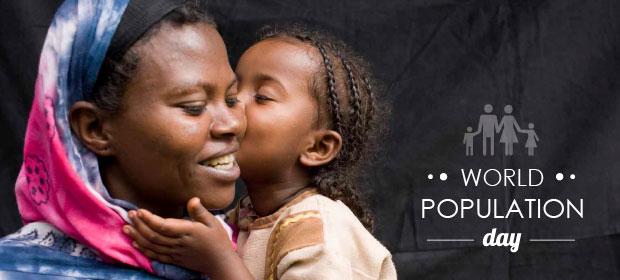Where We Work
See our interactive map


In honor of World Population Day on July 11, president and CEO of IntraHealth International Pape Gaye offers his thoughts on what it’ll take to create a healthy, prosperous world population, and what family planning has to do with it anyway.
Question: Many of us are working hard to increase access to family planning in countries around the world. What are some of the most striking health benefits we can expect to see as this happens?
Pape Gaye: We’ve long known that there is a direct correlation between family planning and better health and birth outcomes.
Families that plan tend to have fewer health complications—children are more often born at normal weights, mothers recover more quickly from childbirth. But youth in low-income countries perhaps see the most striking benefits.
Family planning—or future planning, as we often call it in such cases—greatly reduces the rate of abortions overall and especially among youth. We know that about 13% of maternal deaths worldwide are directly attributable to unsafe abortions. And we know that the highest percentage of those cases occur among young people.
Family planning is one of the smartest investments a country can make in its own future.
There’s also the issue of education. By preventing youth from becoming parents too early and by helping families to plan their growth, we could drastically reduce the number of kids who are not able to complete school.
And this could have a transformative impact on our world population. We’d see healthier families, more educated communities, and societies that are more productive and more prosperous.
Q: What about the economic benefits? Can greater availability of family planning really lead to greater prosperity?
A: We have seen time and again that when a country invests in the health of its population, the investment pays off. For example, between 2000 and 2011, improvements in health have accounted for 24% of the economic growth in low- and middle-income countries, according to the Lancet’s report, Global Health 2035.
And family planning is one of the smartest investments a country can make in its own future. The demographic dividends that come with a robust family planning program can help a low-income country become a middle-income country.
Look at what Indonesia, Thailand, and Singapore have accomplished in the past, for example.
Based on the model of the Asian tiger economies, as they’re called—those of Hong Kong, Singapore, South Korea, and Taiwan—countries can make great progress in shifting their population dynamics. These countries have very strong family planning programs that were an integral part of their economic development.
I grew up in Senegal, in a community where large families were preferred.
Q: What will it take to make family planning more widely available in regions such as West Africa, where progress has been so much slower than in other parts of the world?
A: I grew up in Senegal, in a community where large families were preferred. But that did not necessarily include making sure you could care for all of your children, or making sure that you could provide them each with an education.
In Senegal, we know that almost 30% of women have an unmet need for family planning. We also know that the total demand for family planning is satisfied only about 28% of the time.
But we’re working to change that.
The Ouagadougou Partnership is a great example of how we can accelerate progress in that region. It’s made up of nine governments from across Francophone West Africa, along with their civil society and NGO partners. The partnership works to improve coordination among donors and to mobilize decision-makers at the highest levels of those governments.
This is the way to get real commitment at the country level. This is a step toward transformation for West Africa’s health and economic well-being. And we’re thrilled to be a part of it.
Get the latest updates from the blog and eNews




